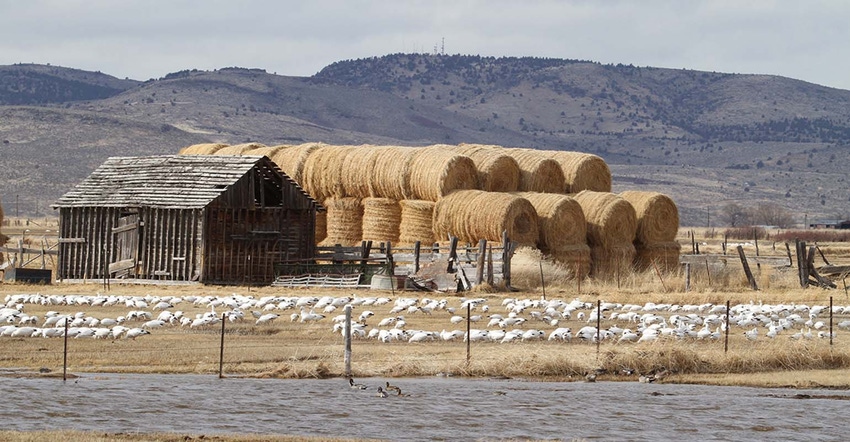September 15, 2017

According to a recent study by researchers from Virginia Tech’s College of Natural Resources and Environment and Point Blue Conservation Science published in the scientific journal Conservation Letters, it is necessary to find ways to sustain the benefits from voluntary conservation practices after the incentive program ends.
In the United States, federal incentive programs aimed at promoting private land conservation fall under the umbrella of the Farm Bill. Typically taking the form of cash payments, tax credits, or cost-share agreements, these incentive programs allow landowners to participate in conservation activities while maintaining ownership of their land.
Persistence, a term introduced in this context by the authors of the study, is the continuation of a conservation practice after incentives from voluntary conservation programs end.
According to lead author Ashley Dayer, assistant professor of human dimensions in Virginia Tech’s Department of Fish and Wildlife Conservation, some conservation practices like tree planting are more likely to continue providing benefits without active management by landowners, while other practices, such as conservation crop rotation, would require a more hands-on approach by landowners. In the latter cases, supporting landowners’ behavioral persistence is essential to maintaining environmental benefits.
Dayer worked with Seth Lutter, a master’s student in fish and wildlife conservation, and Kristin Sesser, Catherine Hickey, and Thomas Gardali from Point Blue Conservation Science, a California-based wildlife conservation and research nonprofit, to examine the existing research literature on landowner behavior after incentive programs ended to determine what factors contributed to landowners continuing conservation efforts on their own.
“We often hear assumptions about how landowners gain a stewardship ethic due to involvement in these programs that may lead them to continue conservation activities after the programs end, but there’s been very little empirical research to support this assumption,” explained Dayer, who is affiliated with the Global Change Center, housed in Virginia Tech’s Fralin Life Science Institute.
According to Gardali, director of the Pacific Coast and Central Valley Group at Point Blue Conservation Science, understanding and promoting persistence is vital to successful conservation efforts.
“Our efforts to provide habitat for water birds in California, in partnership with conservation organizations and rice growers, illustrate the need to have better information on if, when, and why landowners continue to implement a conservation action after the payments end,” Gardali said.
“We recently watched as rice growers who implemented conservation projects were unable to re-enroll for incentives due to program limitations,” he continued. “Bird habitat provision became uncertain and dependent on landowner behavior persistence.”
In this study, supported by the S.D. Bechtel, Jr. Foundation, the authors developed five research-based explanations for whether or not persistence outcomes could be expected. The pathways include landowners’ attitudes toward the conservation practices, landowners’ motivations for participating in incentive programs, habit formation, access to resources, and social influences.
The researchers offer several suggestions for improving conservation program outcomes, including:
Removing limits on the number of re-enrollments allowed for individual landowners if there are a limited number of landowners interested in the program;
Removing limits on the number of re-enrollments for programs where landowners must continually apply a practice for conservation outcomes;
Prioritizing projects where landowners enroll for the long term; and
Considering the likelihood of persistence when designing programs.
Additionally, Lutter notes, “More research is needed in this social science side of landowner conservation incentive programs. American taxpayers are investing billions in these programs, so it’s essential to understand how to promote the programs’ long-term effectiveness.”
Ultimately, incentive programs that assist landowners with conservation efforts benefit the population as a whole.
“Private lands conservation is critical,” Dayer said. “Often when we think about land for wildlife, we think about national parks or protected areas, but those are a small proportion. In the U.S., 60% of the land is privately owned.”
“A disproportionately high amount of wildlife is found on private lands, so having landowners engaged in managing their land is critical to having benefits like wildlife habitat or water quality that all of us enjoy beyond the boundaries of that landowner’s property. It’s beneficial to everyone when landowners are willing to do this work,” she concluded.
Source: Virgina Tech
You May Also Like




